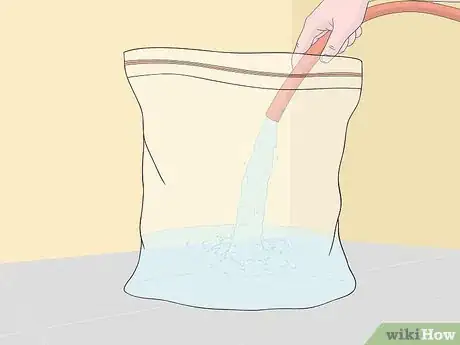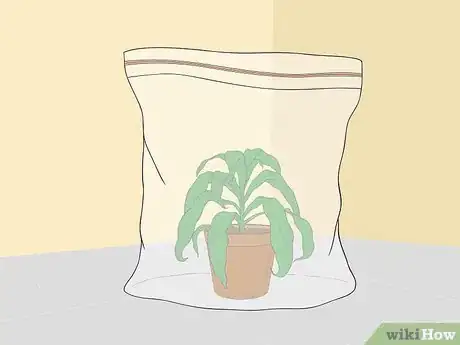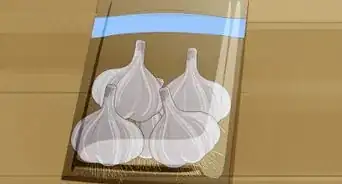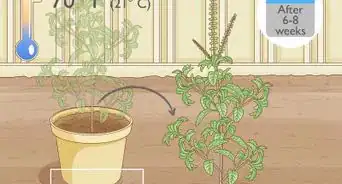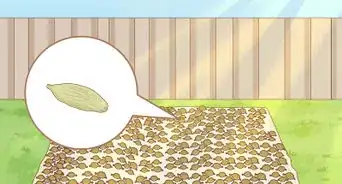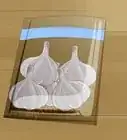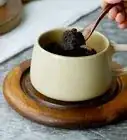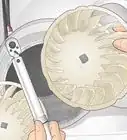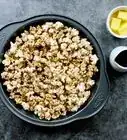X
wikiHow is a “wiki,” similar to Wikipedia, which means that many of our articles are co-written by multiple authors. To create this article, volunteer authors worked to edit and improve it over time.
This article has been viewed 38,237 times.
Learn more...
So you bought an herb plant thinking you could save money and gain a constant supply of fresh herbs just to find that glorious herb wilted later that day (or the next). Never fear, you can revive the plant no matter what color your thumbs are!
Steps
-
1Obtain a clear, intact plastic bag large enough to contain your plant. It is important for it to have a zipper (like a storage bag) or for you to be able to close it to make a seal, so it should not have any holes/leaks.[1]
-
2Fill bag with water enough to submerge the pot part of the plant.Advertisement
-
3Place your plant inside of the bag. Keep your plant inside of its pot (but remove any other plastic wraps or containers surrounding the pot) and place the whole container inside of the bag.
-
4Let it sit for up to 30 minutes. The reason why it's wilted is because the roots are dehydrated. This lets the roots rehydrate quickly.[2]
-
5Take the plant out and remove the water. Once you are sure your plant is hydrated, carefully remove your plant so you do not wash away your soil, and then pour the water out of the bag.[3]
-
6Return the plant to the bag and seal. By sealing the bag, you are creating a humid environment, letting your plant hydrate the rest of the way without drowning the roots.[4]
-
7Place plant in a shaded area. You still want it to receive light but you don't want to cook the plant in the bag. It should take as little as a few hours up to several days for your plant to revive.[5]
-
8Remove plant from bag and place it in its appropriately sunny area. Some herbs need lots of light, some are more shade tolerant. Be sure to place your herb in the appropriate light and water from the bottom so the roots can stay hydrated.
Advertisement
Community Q&A
-
QuestionI have white stuff on my rue plant, what can I use to protect the rue as it dies off?
 NinoxTop AnswererIt is probably due to whiteflies. The first thing to do is to isolate the plant from the others. Then, there are other ways to solve the problem: glue traps, insecticides and predator insects.
NinoxTop AnswererIt is probably due to whiteflies. The first thing to do is to isolate the plant from the others. Then, there are other ways to solve the problem: glue traps, insecticides and predator insects.
Advertisement
Things You'll Need
- Large, clear plastic bag that can be sealed
- Water
- Wilted herb
References
- ↑ https://www.mcall.com/news/mc-xpm-2001-02-25-3343942-story.html
- ↑ https://www.theclevercarrot.com/2014/01/how-to-revive-wilted-herbs/
- ↑ https://www.theclevercarrot.com/2014/01/how-to-revive-wilted-herbs/
- ↑ https://www.housebeautiful.com/lifestyle/gardening/a6158/how-to-revive-a-houseplant/
- ↑ https://www.mcall.com/news/mc-xpm-2001-02-25-3343942-story.html
About This Article
Advertisement

